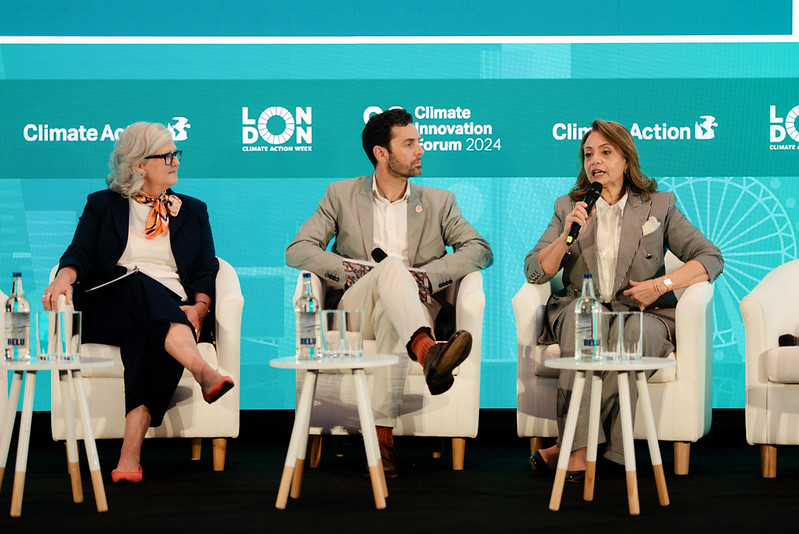
Share this article
Jono Adams, Anthesis Executive Director and Climate Business Line Lead for EMEA, specialises in guiding corporate and private sector organisations and their interactions with government, investors and other key stakeholders.

How are your clients adapting to the net zero agenda and the increasing regulatory requirements?
Adaptation to the Net Zero agenda requires the development of deeply technical skillsets across a wide range of solutions areas – renewable procurement and fleet management, for example – while also ensuring that a system-level approach is taken to drive aligned efforts. What we’re seeing from work with organisations across industries is that these technical skills are lacking across many solution areas, and there are multiple barriers to achieving this system-level approach.
There are a number of possible levers to support decarbonisation at scale. Successful progression of the energy transition, for example, requires an environment in which corporates and governments can work together, rather than in silos. Supply chains and key vendors must be engaged in a meaningful way, with specific strategies per procurement category, and key categories and vendors prioritised at a granular level.
“Ultimately, Net Zero means a fundamental decoupling of emissions from growth – which implies a significant step change in organisations’ core business models.”
Science-based targets and Net Zero strategies shouldn’t be viewed as matters of incremental change; when looking ahead to 2050, aligning with the Net Zero trajectory requires consideration of deeper business model change.
On the regulatory side, I see the very real risk that a focus on meeting regulatory requirements could drive reporting but not action. As a result, we are challenging corporates to focus on the efforts that will support effective management decision-making, and consequently achieve compliance, to get more value from their efforts.
To achieve real change, targets, levers and KPIs for reporting on sustainable performance must be integrated into the core drumbeat of organisations. Transition planning isn’t just another reporting framework – it’s a chance to integrate real action into the core organisational planning and governance rhythms of the organisation.
Can you share examples of how digital solutions are helping organisations accelerate their progress towards net zero?
The rate at which organisations can gather the insight they need from accurate data sources and elsewhere to prioritise decarbonisation measures will have the greatest impact on their progress – and will be a hugely important means of avoiding distraction on their Net Zero journeys. Digital solutions play a key role in providing the data required with ease and speed.
Measurement is about facilitating management decision making. If done well, external reporting and compliance reporting requirements will be a by-product of placing focus on the achievement of good measurement for effective management decision-making – not vice versa.
“Footprinting exercises for product-focused corporates need to integrate product and organisational footprinting to ensure that efficient measurement is achieved, and is being advanced as more insight on product impacts are gathered.”
This is the most effective in situations where systems supporting organisational footprinting are integrated successfully with product footprinting efforts.
Viewed in a wider context, clients can benefit most from digital ecosystems which contain modules to select that apply to their specific needs and maturity. For example, these could be modules related to climate risk scenarios, GHG inventory, reduction action planning and ESG performance management, which need to effectively interact with each other to be most useful.

What role does climate finance play in an organisation’s net zero transition strategy?
Climate finance plays a critical role here. There is a clear need to finance climate reductions at the lowest total cost, and in a way that makes them easy to achieve, to accelerate the Net Zero transition.
Mechanisms such as the voluntary carbon market (VCM) support this approach. Financing carbon projects outside of an organisation’s value chain is certainly not a substitute for organisational reductions – but we should all be taking responsibility for our impact today, not least utilising mechanisms available to reduce risks from future expected regulation and increasing reputational exposure.
In your opinion, are the current practices around avoided emissions effective in reducing carbon footprints or do they risk contributing to greenwashing?
I feel that accelerating emissions avoidance is critical to building the organisations that will facilitate the transition to a low carbon economy. Quantifying and setting targets is, therefore, a critical component of focusing efforts to ensure that aligned, consistent progress is achieved.
It is widely acknowledged that avoided emissions (Scope 4) need to be reported separately from Scope 1-3 emissions, and this principle should be applied to future guidance. There is, however, a great deal of work still required to provide a consistent approach to Scope 4 and avoided emissions. Early efforts are being made by organisations such as WBCSD, which is fantastic, and these efforts must be accelerated and amplified. We are fully committed to supporting and furthering these efforts at Anthesis.
What are you looking forward to and what are you most interested to learn about at the Climate Innovation Forum?
I am delighted to be attending and speaking at this year’s Climate Innovation Forum, and am looking forward to learning about key priorities from the perspectives of governments, corporates and investors, and how these all tie together.
I am also keen to receive any challenges to my approach and views on what system-wide solutions could look like, build on this constructive discussion and gain renewed enthusiasm to continue this good fight!
